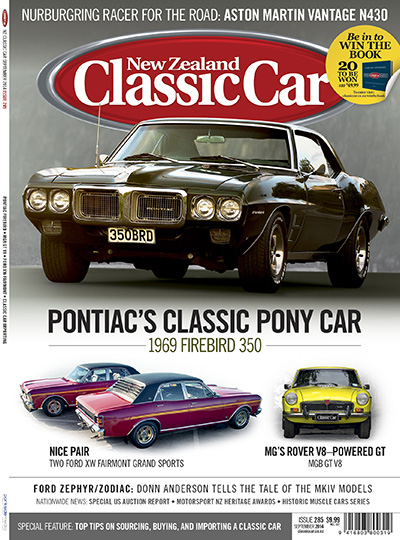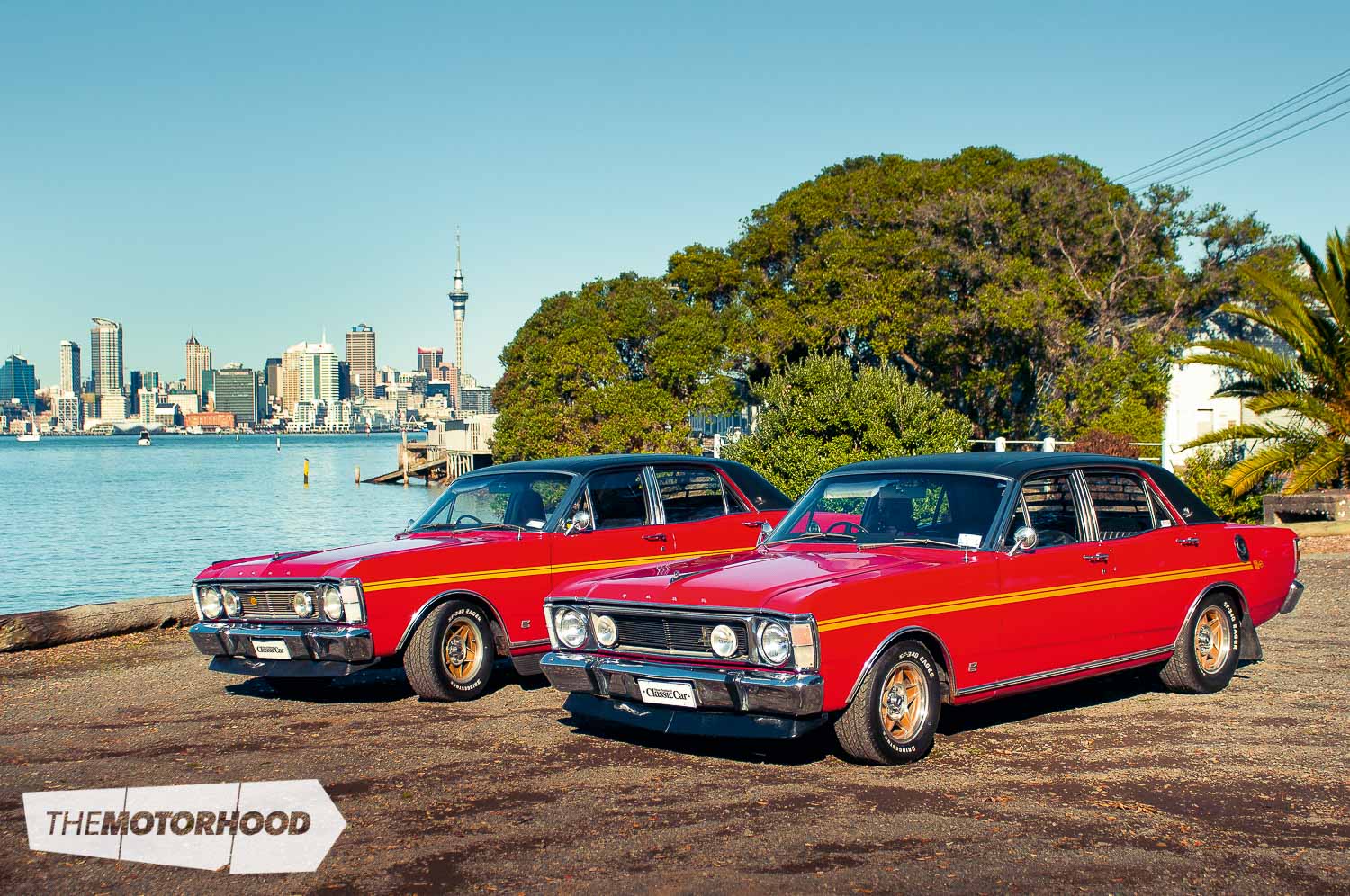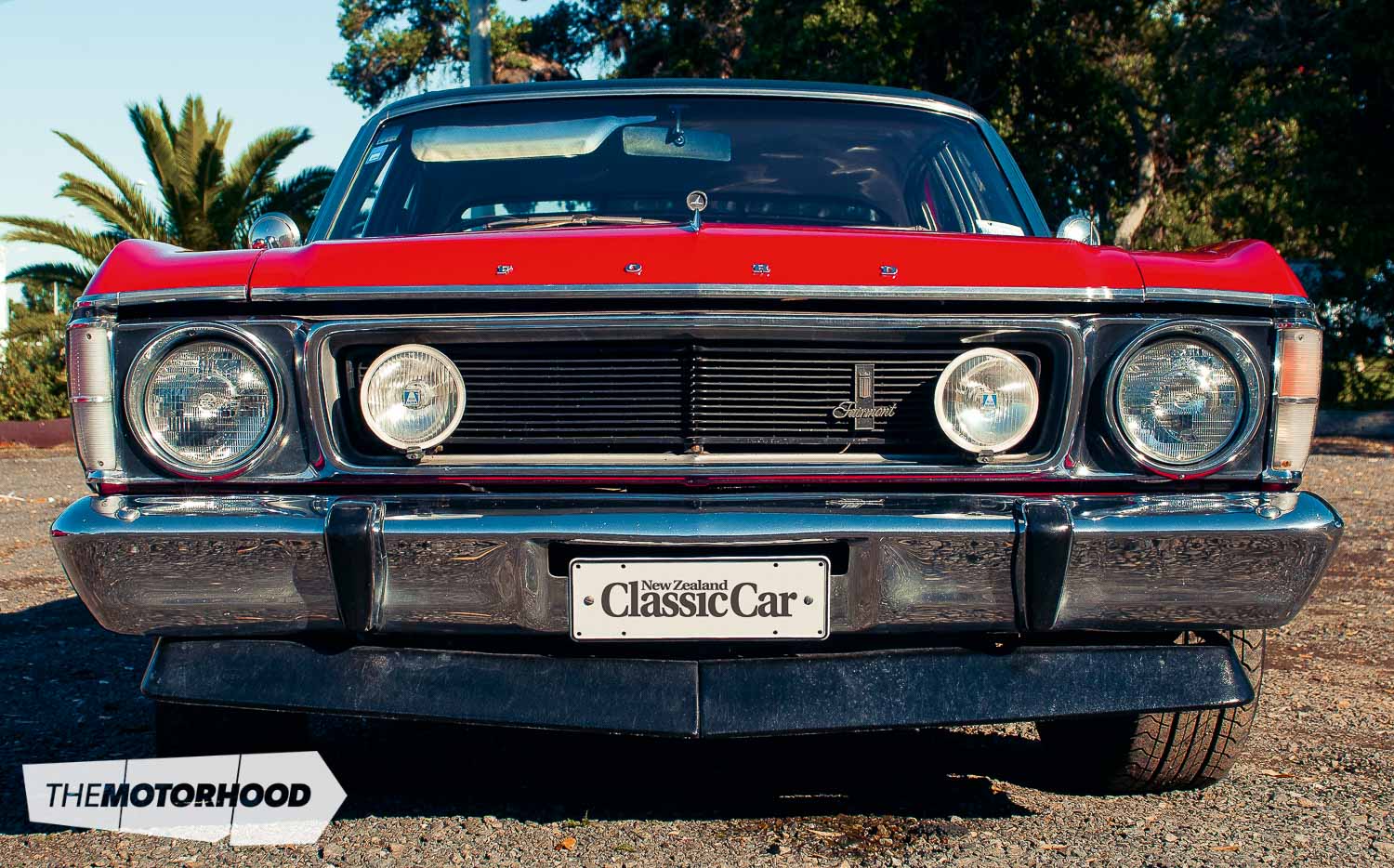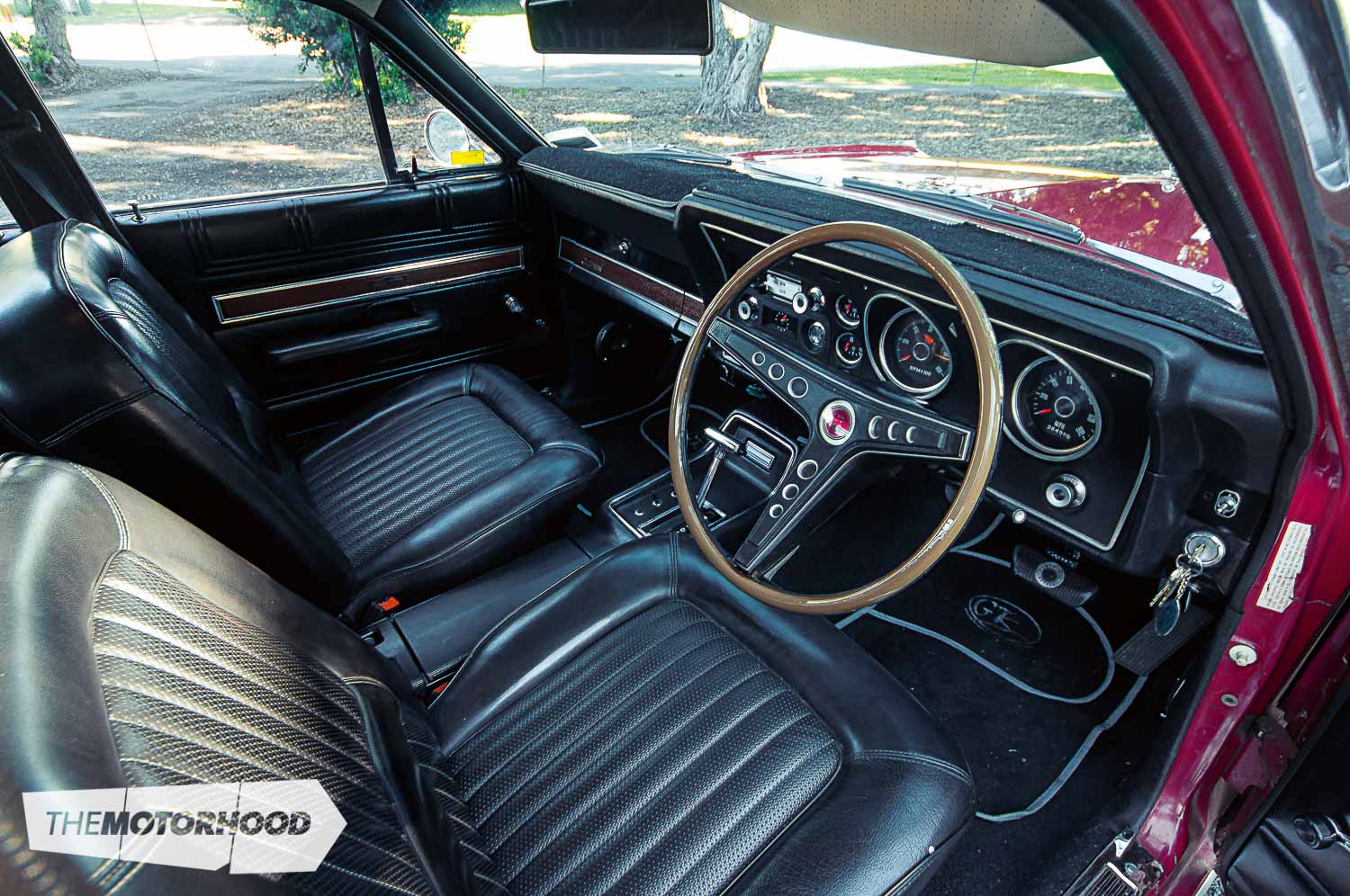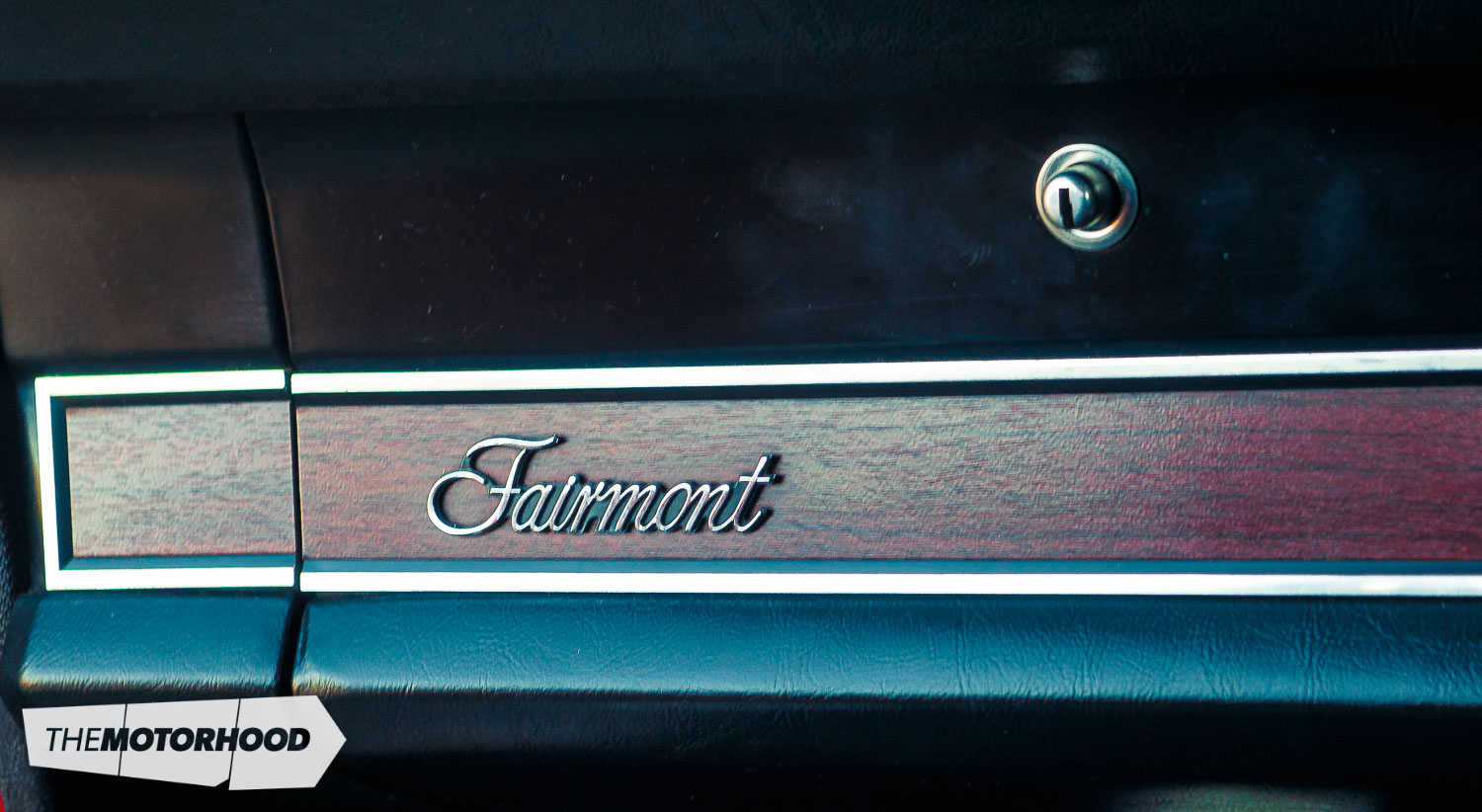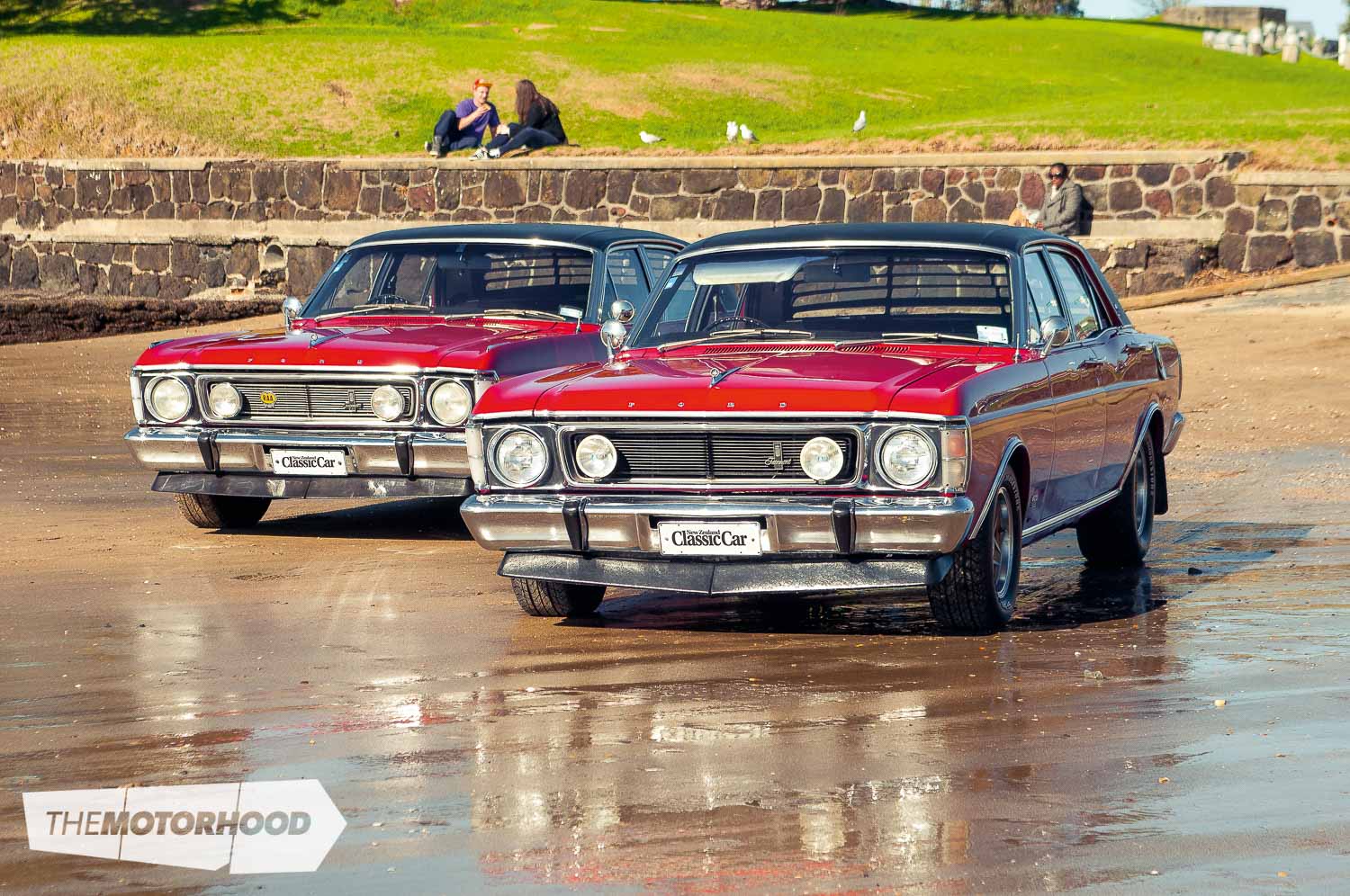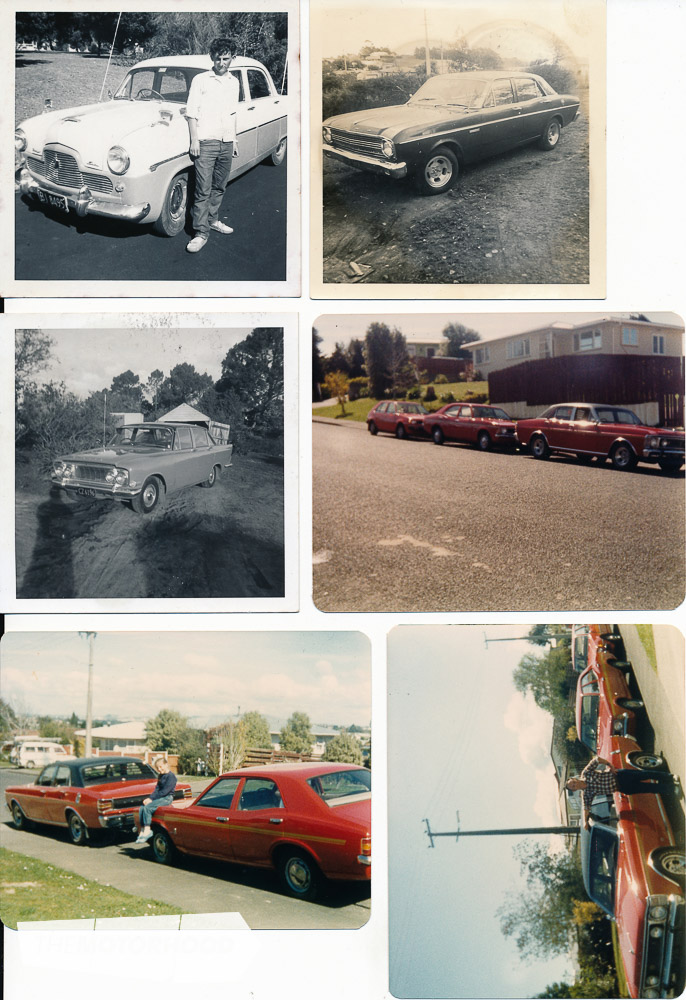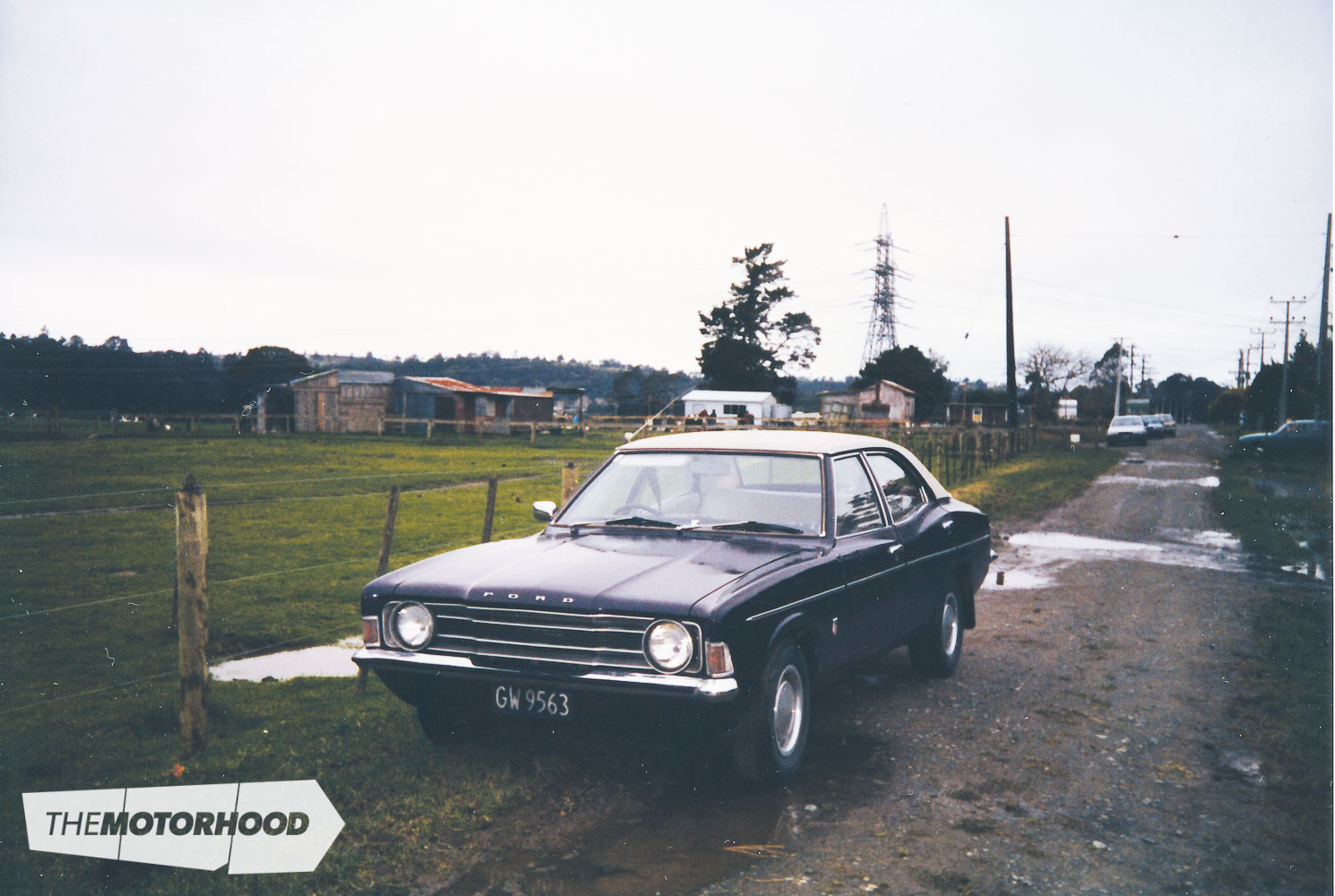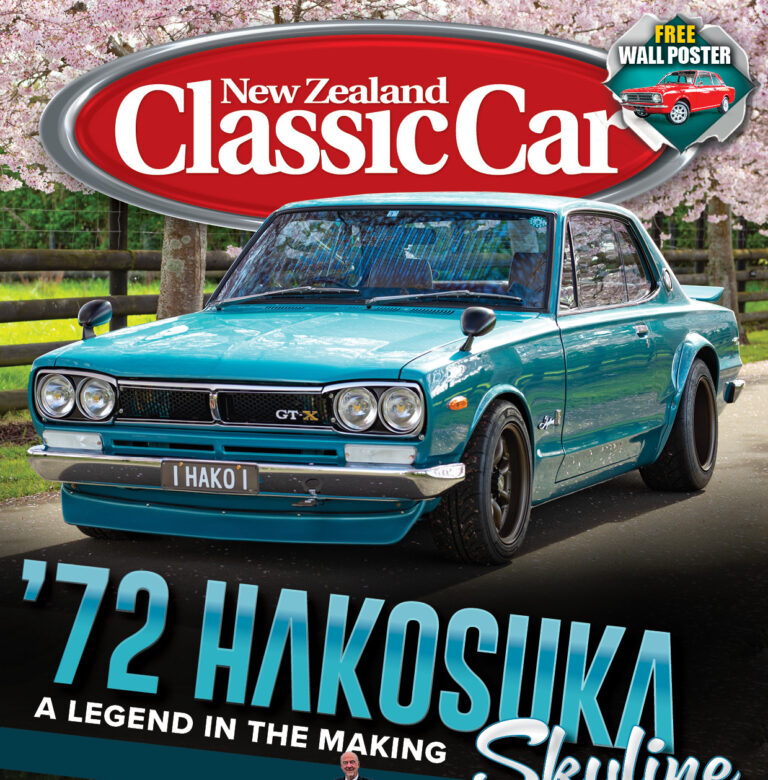
data-animation-override>
“What’s better than owning one classic Aussie Ford? Why, two of course!”
On any given day, it’s fairly rare to see an immaculately presented, original XW Ford Fairmont GS — especially considering the ever-increasing values both here and across the ditch of anything to do with XW or XY Fords. Most classic car enthusiasts are fully aware of the various, and very desirable GTS and GT-HO models, but there are others that are truly worthy of equal acknowledgment, such as the GS.
To see two such rare machines parked side by side, identical in virtually every way, is even more surprising — and then to learn that they rolled off the assembly line one after the other and have consecutive serial numbers is, indeed, quite astonishing, to say the least. In fact, I’ve not seen or heard of any such instance before, especially for vehicles that are 45 years old, in all my years of being associated with this great hobby of ours.
‘X’ marks the spot
Ford Australia released the XW in June 1969, replacing the XT. Despite being the third model of the second generation (1966–1972: XR, XT, XW, XY) of Falcon, it was virtually a completely different car from its predecessor, the XT. In fact, some people even thought it was altogether an entirely new Falcon.
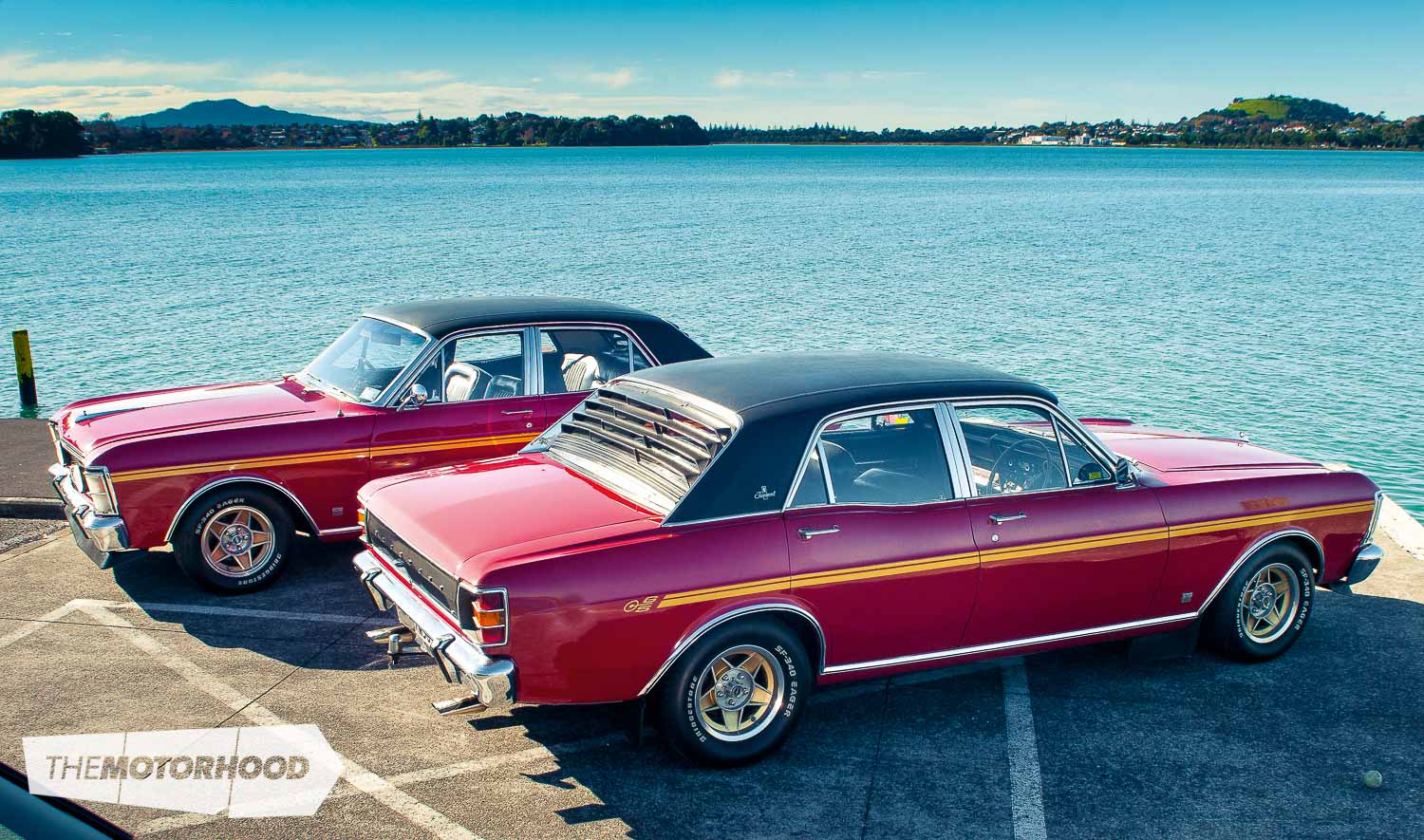
The changes came about after the then–managing director of Ford Australia, Bill Bourke, insisted the XW take on a more aggressive muscle-car look. The mission was indeed accomplished with the birth of the XW. Every exterior panel was restyled, except for the doors, which were carried over from the previous model. The revamped front featured a bold-styled grille — complete with spotlights — nestled between the headlights, and the Ford badge, while still retained, was moved to the side. The parking and indicator lights looked more integrated thanks to their wrap-around styling, and, for the first time, the tail lights were square-shaped.

Another new styling feature was the smart-looking recessed rear screen. Ford certainly pushed the boat out with the XW Falcon, with no fewer than 1966 changes to the car boasted. The interior also came in for some major changes, including a prominent new square dash. Ford had safety in mind when developing the dash, which had thicker padding, and incorporated traditional instruments as well as additional newly styled controls.
Under the bonnet, Ford marginally increased power ratings to the engine line-up. Power from the standard 3.1-litre six-cylinder engine was increased by 3kW to 88kW, while, for the 3.6-litre, power was upped by almost 4kW to 103kW. At the top of the tree, the 302ci (5.0-litre) V8 gained an additional 7kW for a final output figure of 162kW.
For the performance-oriented buyer, the news was good, with the introduction of a floor-shift four-speed manual option in place of the three-speed column-shift manual.
In addition to the standard line-up, Ford brought back the Futura model and introduced the GS (Grand Sport) option package. The idea was quite simple: all that was necessary to create your very own GS was to select a model — Falcon 500, Futura, or Fairmont sedan — then add a GS option package of your choice.

While GS-optioned cars lacked the appeal of the GT, they did offer the cost-conscious a viable alternative. By ticking off preferred options on the order form, several sporty features could be added without going to the expense of buying the much pricier GT.
Sporting items on the GS option list included GS rally stripes and GS insignia, as well as chromed GS wheel covers. Interior options included a deeply dished three-spoke woodgrain sports steering wheel with a full-circle rim-squeeze horn and a GS cockpit dashboard with full GT instrumentation. Buyers could then choose bucket seats and a sports console housing either a four-speed all-synchromesh manual shifter or a T-bar automatic. The V8 was also on offer, along with upgraded turbo-cooled power disc brakes. Power steering and air conditioning could be ticked off on the options list too, along with a laminated windscreen, vinyl roof, and Wide Oval radial tyres to give the GS an even lower, sportier look.
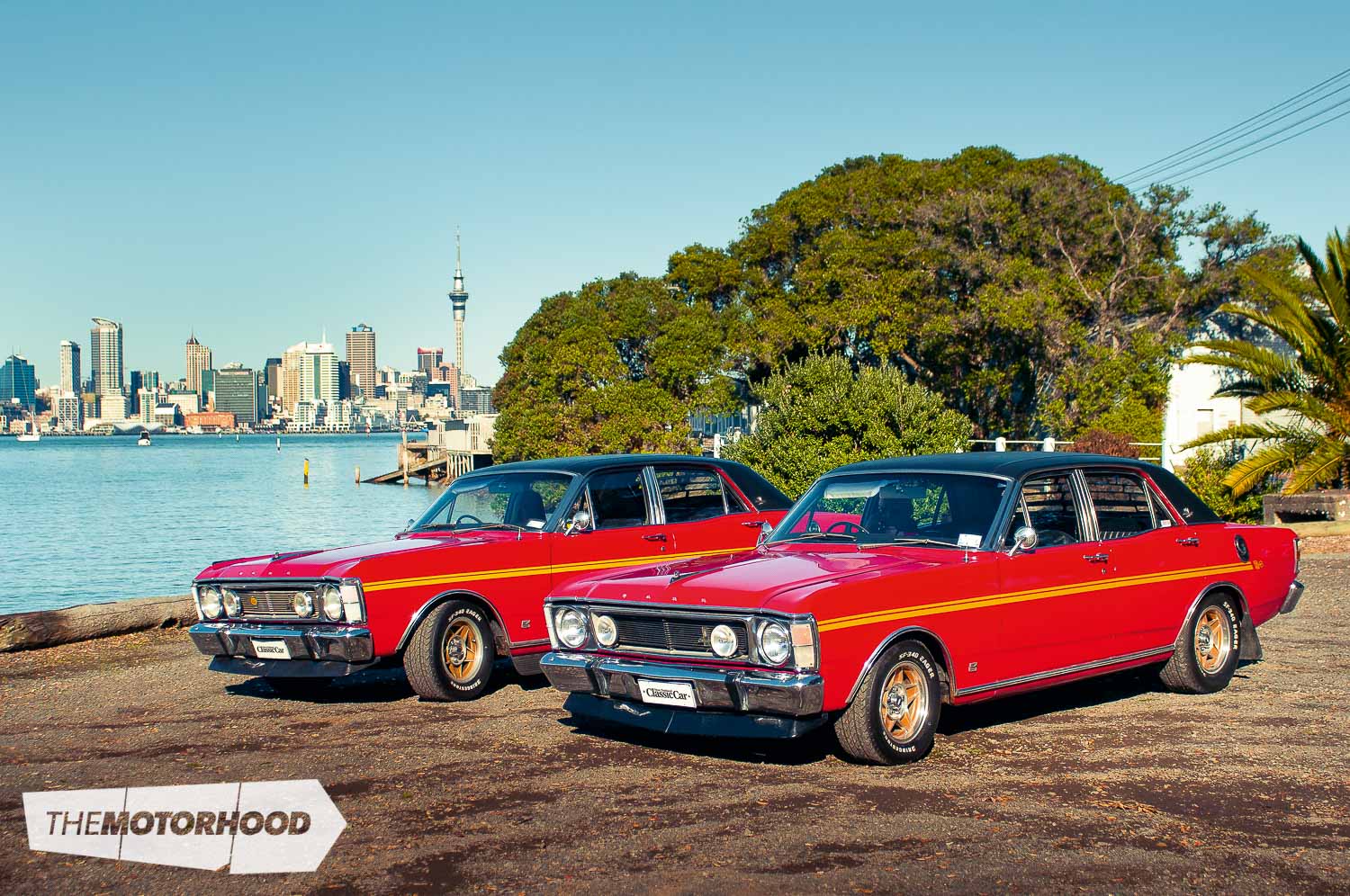
Dynamic duo
The owner of these two stunning XW Ford Fairmont GS cars, Bruce Abernethy, is a true blue-blooded Ford fan. This was confirmed during our visit to his house in order to learn more about him and his passion for anything wearing the blue oval.
Immediately it was quite obvious — by the amount of Ford memorabilia, models, and framed car pictures hanging on the walls, not to mention a garage full to the gunwales with Ford items tucked away on shelves and adorning the basement walls — that Bruce is a lifelong Ford fan.
Back during his secondary-school days, he owned many different makes and models of cars, including a ’36 Chevrolet and a few Hillmans, as well as several Ford Zephyrs and Zodiacs. Bruce believes the latter cars were probably the catalyst for his early obsession with Fords.
Many years later, he went on to buy a ’39 Ford Deluxe sedan which he’d discovered languishing on a farm in Puhoi, just north of Auckland. He subsequently purchased a ’39 Ford Standard that had been fully restored in New Plymouth, and kept both cars for about 25 years, until personal circumstances and the lack of available space meant they both had to be sold on.
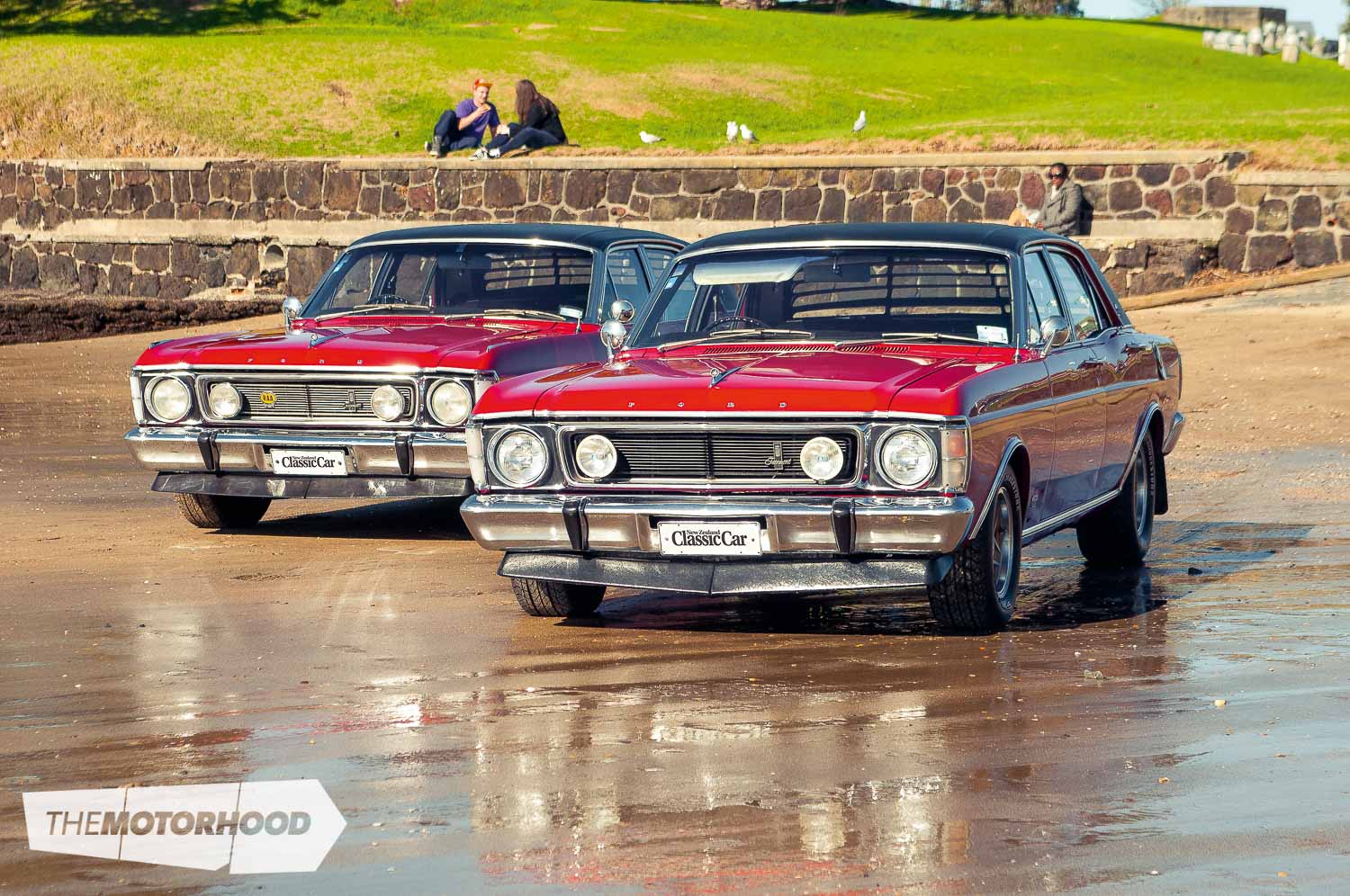
Thirty-two years ago, a good friend put Bruce onto a very original, genuine 1969 Ford XW Fairmont GS. As it transpired, the owner of the car at that time lived in Auckland and had gone to the Ford factory in Australia with a friend of his, where they ordered a 1969 Ford XW Fairmont GS each. The cars were identical in every way, and they toured around Australia in them before returning with them back to New Zealand. Being a Ford man, Bruce was totally enthralled by such a story and couldn’t resist investigating further, discovering that the owner’s daughter was selling the car on her father’s behalf. Bruce was able to successfully negotiate a suitable deal with her to secure ownership. Unfortunately, due to the fact that the GS had been sitting for so long, it wasn’t running at its best — it was firing on only six cylinders, according to Bruce — and a valve grind and full mechanical service were needed before it was running perfectly again.
The Fairmont GS quickly became Bruce’s pride and joy, despite the fact he still owned the two ’39 Fords and a Zephyr MkII — his Ford collection was certainly looking impressive indeed.

Searching for a sister
Bruce remained very conscious of the fact that the sister car to his Fairmont GS was still out there somewhere, and, ironically, five years or so down the track, a friend of his ended up with the other car. He subsequently fully stripped and repainted the Fairmont, as well as fully rebuilding its engine. A couple of years later, the car was on-sold. Alas, Bruce couldn’t afford to buy it at the time. The Ford was then sold again to a car sales yard in West Auckland, before finally ending up in Napier.
One day, a few years later, Bruce was talking to another car dealer friend, who suggested that Bruce should try to locate the Fairmont once again. Eventually, they were able to track down the car’s current owner, and Bruce decided to give him a call. Bruce explained that he had the sister car and would be interested in purchasing the vehicle should they ever wish to sell it. The offer was on the table and, as the years passed, thoughts of the second Fairmont slowly faded in Bruce’s mind.
However, lo and behold, about 10 years later, the phone rang with the news Bruce had been waiting for, and he was able to acquire the matching Ford.
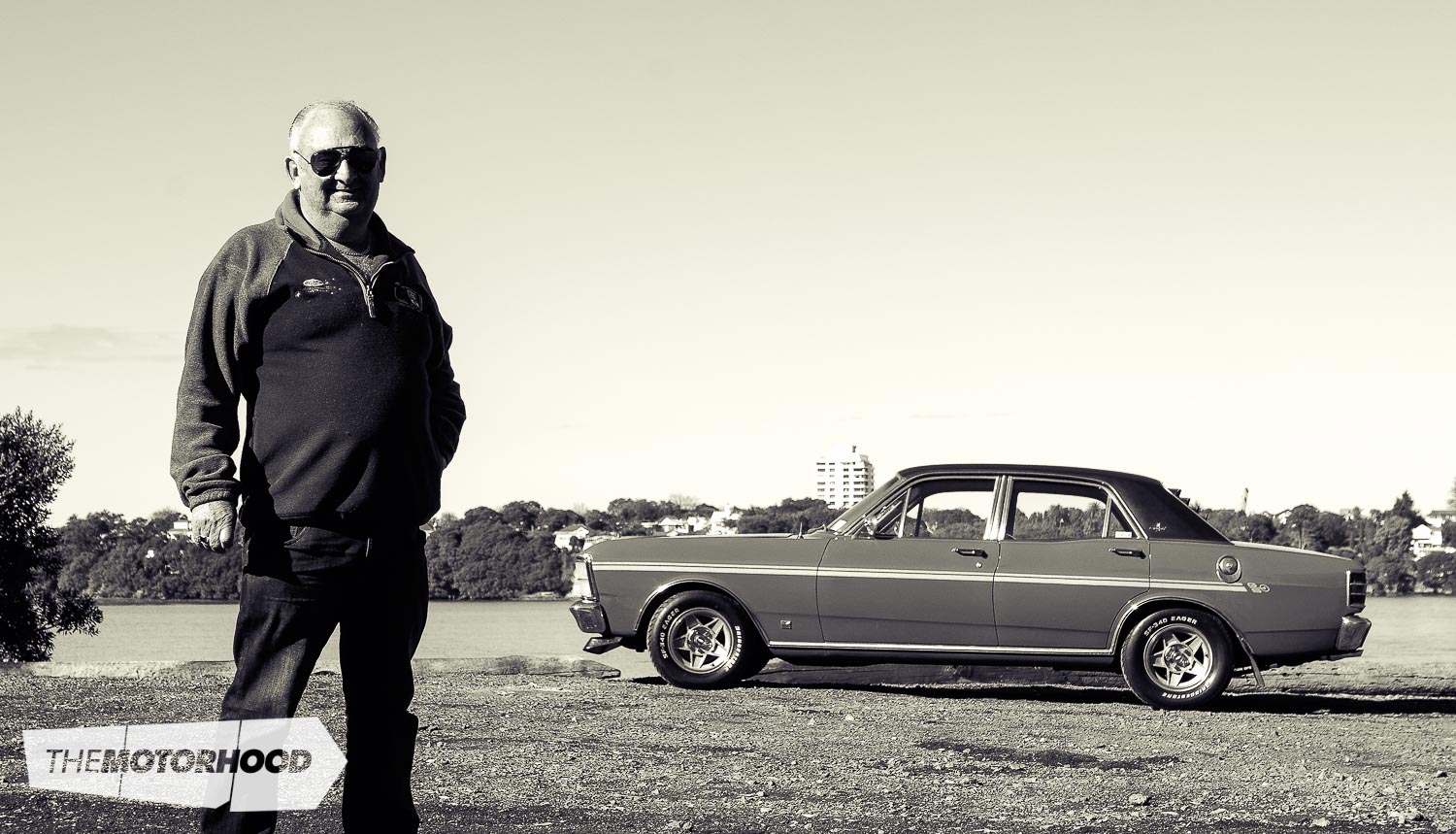
That all happened 17 years ago, and, in the years since then, Bruce has enjoyed every moment of owning this unique, matching pair of Fairmont GS sedans and insists on driving one of them at least once a week, either down to the local market or to a local monthly car show.
His first car is still completely original, apart from a few very minor touch-ups, and the only visual difference between it and the second car — if you look hard enough — is that the latter had its grille painted black at the time it was fully repainted; but Bruce has another original grille among his stash of parts.

About three years ago, Bruce discovered another gem that he just couldn’t resist — a one-owner 1988 XF Fairmont Ghia that had only travelled a mere 11,000km since new. Today, the Ghia is still in absolutely showroom condition, although Bruce has added about 4000km to the clock.
Unfortunately, the time has come for him to pass on the two Fairmont GS sedans to a new custodian, having loved and cared for these cars for decades. However, having moved into another phase of his life, which will allow him more time to relax and enjoy his retirement years travelling around the world and spending time with his family, he’ll still keep the low-mileage Fairmont Ghia. Although, he admits with a grin, there may be the possibility of a new project along the way, but we’ll just have to wait and see.
1969 Ford XW Fairmont GS
(GS Pack — optional GT-style rally stripes, chrome wheel covers, GT three-spoke woodgrain steering wheel with rim-squeeze horn, full GT instrumentation)
- Engine: Ford V8
- Capacity: 5.0-litre (302ci)
- Bore/stroke: 101.6mm x 76.2mm
- Valves: Two valves per cylinder / OHV
- Comp Ratio: 9.5:1
- Max power: 164kW (220bhp) at 4600 rpm
- Max torque: 407Nm (300lb/ft) at 2600rpm
- Fuel system: Two-barrel Autolite carburettor
- Transmission: Three-speed Cruis-O-Matic automatic
- Suspension: Front/rear: independent with coil springs and hydraulic double-acting shock absorbers, stabilizer bar / live axle, semi-elliptic springs with hydraulic double-acting shock absorbers
- Steering: Recirculating ball, optional power steering
- Brakes: Power-assisted disc/drum
Dimensions:
- Overall length: 4689mm
- Width: 1869mm
- Height: 1417mm
- Wheelbase: 2819mm
- Track F/R: 1496/1486mm
- Kerb weight: 1348kg
Performance:
- Max speed: 183kph
- 0–100kph: 10.2 seconds
- Standing quarter-mile: 16.9 seconds
This article was originally published in New Zealand Classic Car Issue No. 285. You can pick up a print copy or a digital copy of the magazine below:
